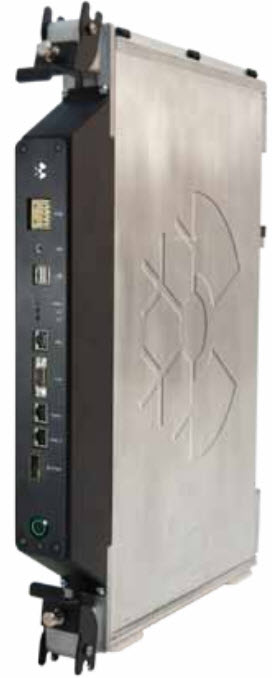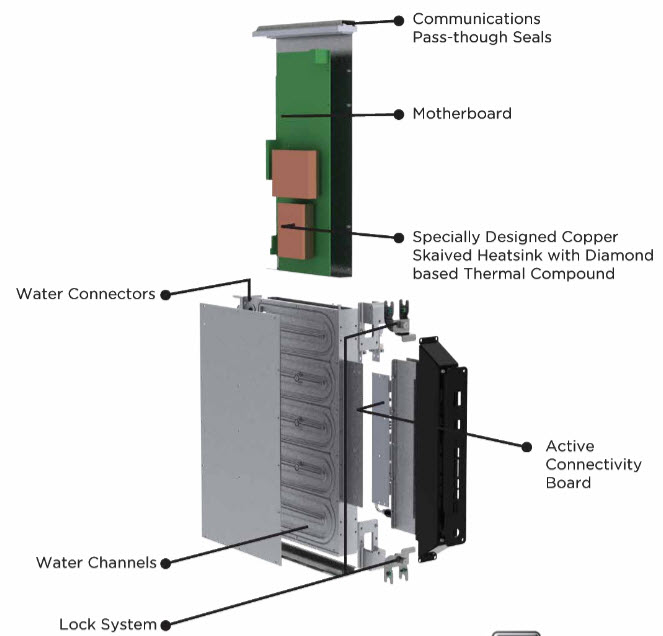‘Wet’ computer server could cut wasted energy for cooling
February 27, 2013

A complete Iceotope Solution, one platform and 48 Intel modules, will deliver 768 Cores, 12 TB of RAM and up to 28 TB of Storage for 20 kW COOLED or less than 12.5 Watts per core (credit: Iceotope)
A revolutionary liquid-cooled computer server design that could slash the carbon footprint of the Internet is being tested at the University of Leeds.
Unlike most computers, which use air to cool their electronics, all of the components in the new server are completely immersed in liquid. The power-hungry fans of traditional computing are replaced by a silent liquid-cooling process that relies on the natural convection of heat.
Its designers calculate that the server cuts energy consumption for cooling by between 80 percent and 97 percent.
U.K. company Iceotope designed and built its new server working with team of researchers led by Dr. Jon Summers from the University of Leeds’ School of Mechanical Engineering. The first production system has now been installed at the University after two years of testing prototypes.
“The liquid we are using is more than 1,000 times more effective at carrying heat than air,” said Summers, whose team used computational fluid dynamics to model how the coolant flows through the new server’s components.
The non-flammable liquid coolant, called 3M Novec, can be in direct contact with electronics because it does not conduct electricity.
There is no equivalent of the noisy fans required by traditional computers and the server does not require an elaborate pump to move the coolant over its components.
How it works
Instead, a simple low-energy pump, located at the bottom of the cabinet, pumps a secondary coolant (water) to the top, where it cascades down throughout all 48 modules due to gravity.
The secondary coolant terminates at heat exchangers within the cabinet for transfer of heat to a third and final coolant, on an external loop, taking the heat away for external cooling or reuse.
The third coolant can be drawn from “gray water” sources such as rainwater or river water, further reducing the environmental impact of the server. Because of the high cooling efficiency of the system, the output water can reach temperatures of up to 50 degrees Centigrade, which can be used for heating and other uses.
The Iceotope system uses just 80 watts of power to harvest the heat from up to 20 kilowatts of ICT use. The server also does away with the need for ancillary data center facilities, such as computer room air conditioning (CRAC) units, humidity control systems, and air purification.
“The fact that this system is completely enclosed raises a host of possibilities, said Dr. Nikil Kapur, also from the University of Leeds’ School of Mechanical Engineering. “It does not interact with its environment in the way an air-cooled server does, so you could put it in an extreme environment like the desert. It is also completely silent. You could have it on a submarine or in a classroom.”
A 2011 report by Datacenter Dynamics estimated that the world’s data centers currently use 31 gigawatts of power, the equivalent of about half of the UK’s total peak electricity demand. A 2008 report by McKinsey and Company projected that data center carbon emissions will quadruple by 2020 and a year-long investigation by The New York Times, published in September, criticized the industry for its energy waste.
